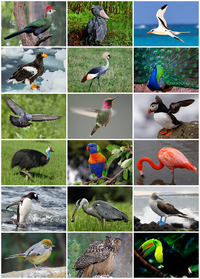
Photo from wikipedia
Abstract Long‐term data on host and parasite fitness are important for predicting how host–parasite interactions will be altered in an era of global change. Here, we use data collected from… Click to show full abstract
Abstract Long‐term data on host and parasite fitness are important for predicting how host–parasite interactions will be altered in an era of global change. Here, we use data collected from 1997 to 2013 to explore effects of changing environmental conditions on bird–blowfly interactions in northern New Mexico. The objectives of this study were to examine what climate variables influence blowfly prevalence and intensity and to determine whether blowflies and climate variables affect bird fledging success. We examined how temperature, precipitation, and drought affect two parasitic blowflies and their hosts, Western Bluebirds (Sialia mexicana) and Ash‐throated Flycatchers (Myiarchus cinerascens). We found that blowfly prevalence did not change over time. Blowfly intensity increased over time in bluebird nests, but not in flycatcher nests. More blowflies result in slightly higher fledging success in bluebirds, but not flycatchers. There was a significant interaction between blowflies and precipitation on bluebird fledging success. For flycatchers, there was a significant interaction between blowflies and temperature and between blowflies and drought severity on fledging success. Given that the southwest is projected to be hotter and have more frequent and prolonged droughts, we predict that flycatchers may be negatively impacted by blowflies if these trends continue. Future work should focus on investigating the role of both blowflies and climate on fledging success. Climate patterns may negatively impact host fitness through altered parasite pressure.
Journal Title: Ecology and Evolution
Year Published: 2019
Link to full text (if available)
Share on Social Media: Sign Up to like & get
recommendations!